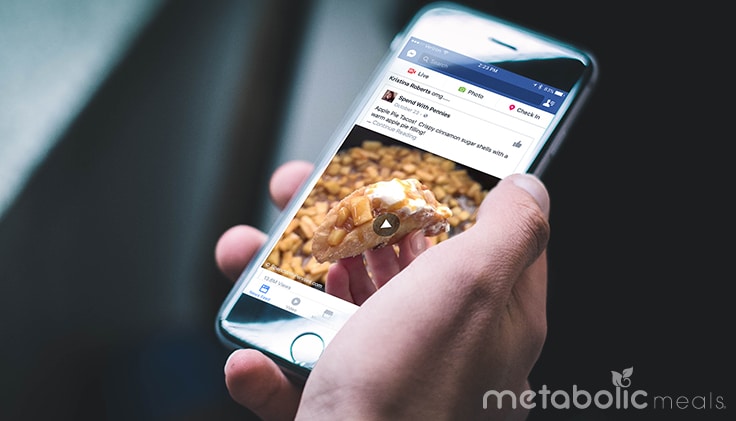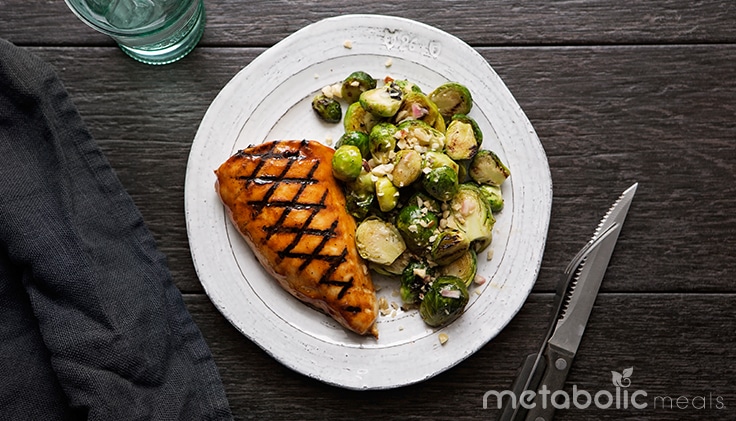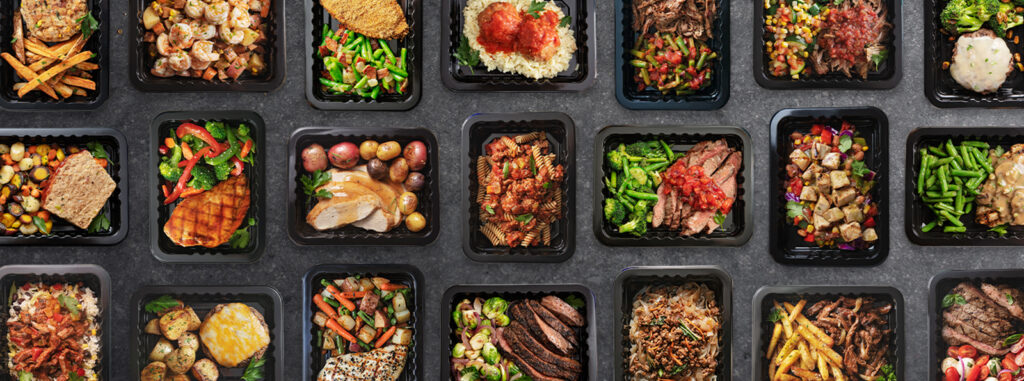ARTICLE AT A GLANCE
Alex McMahon, Nutritional Therapy Practitioner
It’s a new year, and with it comes resolutions to eat healthy and lose weight. When people think of the word “diet,” they think restrictions. Diets today are built on the idea that you have to exclude certain foods or macronutrients (protein, fat, or carbohydrates) to achieve optimal health or lose body fat. Each diet contains different “off limit” foods. For example, a paleo diet contains an extensive list of foods that are approved or to be avoided — items like grains, legumes, dairy, sugar, and alcohol.
The past few years have seen a shift away from specific diets and an increased focus on calories and macronutrient goals. This approach to nutrition is known as flexible dieting or “If It Fits Your Macros” (IIFYM) and gives you the chance to enjoy your favorite foods — within reason — instead of excluding them. The basic premise of IIFYM is that you have a target calorie, macronutrient, and fiber goal for the day. Once you’ve calculated your macros, the foods you choose are up to you based on your dietary preference.
Benefits of IIFYM
IIFYM and flexible dieting allow you to eliminate the idea of “off limit” foods; you don’t feel deprived or battle food cravings. A guilt-free, planned indulgence helps you adhere to the plan the other 85 percent to 90 percent of the time because you’re not focused on what you can’t have. IIFYM teaches you to take a more balanced approach to nutrition and not to demonize foods or macronutrients. This technique can improve your relationship with food instead of planning meals from fear, anxiety, or what nutrition gurus have told you.
With flexible dieting, you quickly learn the real caloric and macronutrient content of the foods you’re eating. Humans are notoriously bad at estimating food intake; it can be frustrating when you think you’re doing everything right but still aren’t losing body fat. That’s one reason people hop from diet to diet. Having to count and track specific calorie and macronutrient goals helps you have a more consistent intake and understanding of food, calories, and macros.
Determining Your Macros
How do you calculate these ideal macros? You should typically aim for 1 gram of protein for every pound you weigh. From there, dietary fat should make up 20 percent to 35 percent of your total calories (based on your current body fat). Your remaining calories are made up of carbohydrates. Generally leaner people will eat more carbs, while heavier people will eat more fat and fewer carbs. A spreadsheet or app can help you stay on top of your calculations.
Another element of intelligent flexible dieting is to set a fiber goal for the day. This is typically 10 grams to 15 grams of fiber for every 1,000 calories. The fiber goal helps to ensure the consumption of fruits, vegetables, and minimally processed carbohydrates.
Macro Misconceptions
One of the biggest misconceptions about IIFYM is that it was intended to ever become a diet. According to Alan Aragon, IIFYM started online in bodybuilding forums. Newbie members repeatedly came online to ask if certain foods were allowed. The standard answer was, “if it fits your macros, go ahead and eat it.” Over time, the acronym IIFYM was used instead. This eating style was meant to give athletes more freedom over food choices and remove the idea that people had to eat a small list of specific foods to reach their goals.
Another misunderstanding is that IIFYM is a pro-junk food diet, due to the flexibility of food choices. This was never the intention. Flexible dieting assumes that the majority of your food is nutritious, and a small remainder — perhaps 10 percent to 15 percent — can come from cheat foods.
Putting IIFYM Into Action
Smart IIFYM followers care about their health on top of their physique. If they truly follow the plan, it’s impossible to eat junk food frequently and still meet your goals. If you’re embarking on your first steps with the IIFYM eating plan, here are three things to keep in mind:
1. Ignore social media.
Despite what you see on social media, this plan is not ice cream and donuts. While some people post photos of junk food, if they are following the plan, they are eating lean protein, vegetables, starches, fruits, and healthy fats for the rest of their meals throughout the week.
2. Eat whole foods.
Make sure to get at least 80 percent of your food from minimally processed nutrient-dense foods that you enjoy eating. You’ll feel fuller for a longer period of time when eating whole foods than if you eat junk food. This also happens when you hit your fiber goal daily, and a large bulk of your diet will be coming from vegetables, minimally processed starches, and fruits. Aim for 3 servings to 6 servings of vegetables, as well as 3 servings to 4 servings of fruit each day.
3. Track your intake.
When you first start a flexible diet, keep your foods simple for tracking purposes. Complicated recipes result in too much energy and attention to the calculations, which may be discouraging. Opt for simple, balanced meals containing protein, complex carbohydrates, healthy fats, fruits, and vegetables. You’ll end up being more satiated and less likely to overeat. Another option for tracking and portion control is signing up for a healthy meal plan.
IIFYM isn’t meant to be a diet — it’s a nutritional approach. Instead of being built on restricted food groups, it makes you more conscious of your food intake, while removing the guilt or shame that can be associated with food. Use flexible dieting to remove the idea that you need to be “on” or “off” a diet. Make it a healthy adjustment you can sustain indefinitely.
About the author: Alex McMahon is a Nutritional Therapy Practitioner and founder of Evolve Nutritional Therapy LLC. He practices nutrition in Portland Oregon helping clients achieve optimal health using whole foods, nutritious movement and lifestyle adjustments. Alex writes for Barbell Shrugged, and runs his own blog; Eat To Evolve.When he isn’t meeting with clients, giving talks or researching nutrition, Alex can be found training Muay Thai, Jiu Jitsu and lifting. To learn more visit his website at: www.evolvenutritionaltherapy.com










